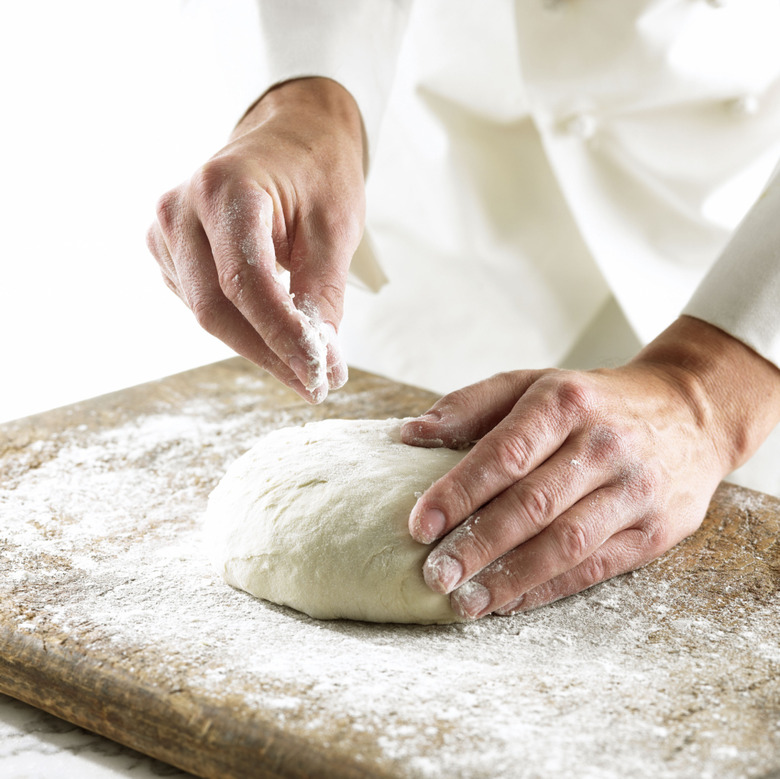Chemical Reactions That Occur During Baking
Mixing together eggs, flour, sugar, water and other ingredients to make dough, then baking that dough in an oven, can seem like a simple yet magical process. The delicious end result that appears accentuates the extraordinary nature. It's not magic, however, but a series of complex chemical reactions that is behind this cooking process, which has been around for thousands of years.
Protein Bonding
Protein Bonding
Flour contains two important proteins — glutenin and gliadin. When water is added to flour to make dough, it allows these proteins to bond together and from a new protein called gluten. Kneading the dough intensifies these gluten bonds. After the dough is place into a heated oven, it begins to rise and grow the gluten network. This network eventually hardens during the baking process, giving the inside of a loaf of bread or similar baked good its signature structure.
Magic Leaveners
Magic Leaveners
Leavening agents — such as yeast, baking powder and baking soda — give baked dough its pillowy lightness. Baking soda achieves this by reacting with acids in the dough to produce carbon dioxide gas, which puffs up the dough. Baking powder releases carbon dioxide twice during the entire baking process — once when it hits water and once when it reaches a certain temperature in the oven. When yeast is added to dough, it begins to feed on starches — producing sugars, alcohol and carbon dioxide as byproducts. As with baking powder and baking soda, the carbon dioxide produced by yeast causes the dough to rise.
Maillard Reactions
Maillard Reactions
Maillard reactions occur when proteins and sugars are broken down and rearranged by high temperatures. These sugars and proteins can be derived from flour by itself, or they can be enhanced with the addition of sugars and eggs. The reactions produce ring-shaped organic compounds that darken the surface of baking dough. Maillard reactions also produce toasty and savory aromas and flavor compounds. These compounds also react among each other, producing even more complex aromas and flavors.
Flavors of Caramelization
Flavors of Caramelization
Caramelization, which occurs at 356 degrees Fahrenheit, is the last chemical reaction to occur during the baking process. The reaction occurs when high heat causes sugar molecules to break down and release water, which turns into steam. Diacetyl, which gives caramel its butterscotch flavor, is produced during the first stages of caramelization. Next, esters and lactones, which have a rum-like flavor, are produced. Finally, the production of furan molecules imparts a nutty flavor, and a molecule called maltol imparts a toasty flavor.
Cite This Article
MLA
Smith, Brett. "Chemical Reactions That Occur During Baking" sciencing.com, https://www.sciencing.com/chemical-reactions-that-occur-during-baking-12731635/. 18 February 2014.
APA
Smith, Brett. (2014, February 18). Chemical Reactions That Occur During Baking. sciencing.com. Retrieved from https://www.sciencing.com/chemical-reactions-that-occur-during-baking-12731635/
Chicago
Smith, Brett. Chemical Reactions That Occur During Baking last modified August 30, 2022. https://www.sciencing.com/chemical-reactions-that-occur-during-baking-12731635/
